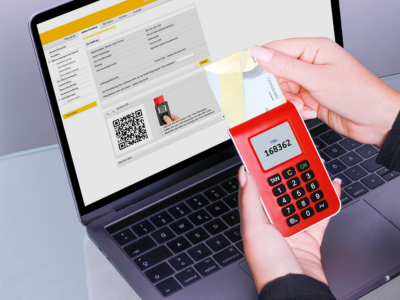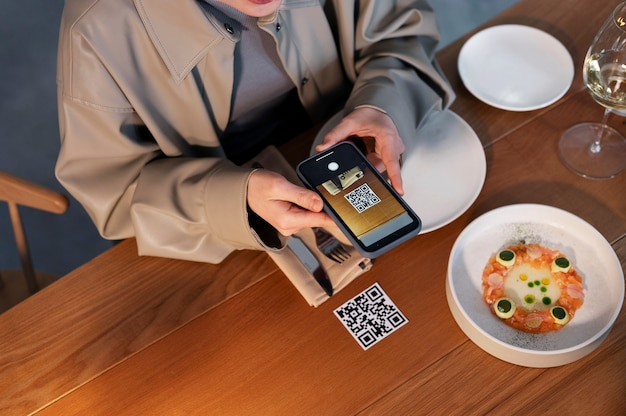QR codes have become an integral part of our lives, facilitating quick and convenient access to information, websites, and services. However, it’s essential to ensure that these codes are accessible to all users, including those with disabilities. In this article, we will explore the importance of ‘QR Codes Accessible for All Users’ tips on creating inclusive QR codes that can be easily scanned and understood by everyone.
Introduction
In today’s digital age, QR codes have gained popularity as a versatile tool for sharing information. These square-shaped codes consist of black modules arranged on a white background and can be scanned using smartphones or QR code readers. While QR codes offer numerous benefits, it’s crucial to consider accessibility to ensure that all users, including those with visual impairments or other disabilities, can benefit from them.
What are QR codes?
Before delving into accessibility, let’s briefly understand what QR codes are. QR stands for Quick Response, and these codes were initially created for the automotive industry to track vehicle parts. Today, QR codes are widely used in marketing, advertising, ticketing, inventory management, and more. They can contain various types of information, such as URLs, contact details, payment details, or text messages.
Importance of QR code accessibility
Ensuring QR code accessibility is crucial for several reasons. First and foremost, it promotes inclusivity and allows individuals with disabilities to access the same information as others. It also helps businesses and organizations comply with accessibility guidelines, avoiding potential legal issues. Furthermore, creating accessible QR codes can enhance user experience and improve customer satisfaction, leading to stronger brand reputation and customer loyalty.

Understanding accessibility guidelines
To make QR codes accessible, it’s essential to familiarize yourself with accessibility guidelines. The Web Content Accessibility Guidelines (WCAG) provide a comprehensive framework for creating accessible digital content, including QR codes. Key considerations include providing alternative text, using high-contrast colors, ensuring proper sizing, and considering the placement of QR codes.
Creating accessible QR codes
To ensure accessibility, follow these best practices when creating QR codes:
1. Choosing a high-contrast color scheme
Opt for a color scheme that offers a clear contrast between the QR code and its background. This ensures that individuals with visual impairments or color blindness can easily distinguish the code’s pattern and scan it accurately.
2. Adding alternative text for screen readers
Include descriptive alternative text (alt text) that provides a concise and accurate description of the QR code’s content. Screen readers can then read this alt text aloud, enabling individuals with visual impairments to understand the purpose of the code.
3. Incorporating larger data dots for easy scanning
Increase the size of the individual data dots within the QR code. This modification helps individuals with limited vision or fine motor skills to scan the code more easily using their smartphones or QR code readers.
4. Ensuring proper sizing and placement
Consider the size and placement of the QR code to ensure optimal readability. It should be large enough to be easily scanned, even from a distance, and positioned in a way that users can approach and interact with it comfortably.
Testing accessibility of QR codes
After creating an accessible QR code, it’s essential to test its accessibility. Scan the code using various devices, QR code readers, and screen readers to ensure it can be accurately interpreted and understood by all users, including those with disabilities.
Promoting QR code accessibility
Promoting QR code accessibility involves raising awareness and educating others about the importance of creating inclusive QR codes. Encourage businesses, organizations, and individuals to follow accessibility guidelines and provide resources or guidelines that promote accessibility best practices.
Examples of accessible QR codes
Accessible QR codes come in various forms, tailored to meet the needs of different users. Some examples include:
- A QR code with large, high-contrast dots and descriptive alt text.
- A QR code placed at a convenient height for wheelchair users to scan comfortably.
- A QR code with tactile elements, allowing individuals with visual impairments to touch and feel the code.
Benefits of accessible QR codes
Creating accessible QR codes benefits both businesses and users. For businesses, it demonstrates a commitment to inclusivity and improves the overall user experience. Accessible QR codes can also lead to increased engagement, better customer satisfaction, and enhanced brand reputation.
Challenges and considerations
While making QR codes accessible is crucial, it’s essential to consider the challenges and potential limitations. Factors such as available technology, design constraints, and compatibility with different devices and software should be taken into account when creating and implementing accessible QR codes.
FAQs
Q1. Can QR codes be accessed by individuals with visual impairments?
Yes, by following accessibility guidelines and incorporating best practices, QR codes can be made accessible for individuals with visual impairments. This includes providing descriptive alt text and using high-contrast colors.
Q2. What is the alt text, and why is it important for QR codes?
Alt text is a text alternative that describes the content of an image or QR code. It is important for QR codes because it enables individuals with visual impairments to understand the purpose and context of the code.
Q3. How can I test the accessibility of a QR code?
You can test the accessibility of a QR code by scanning it using various devices, QR code readers, and screen readers. This helps ensure that the code can be accurately interpreted and understood by individuals with disabilities.
Q4. Are there any legal requirements for QR code accessibility?
While specific legal requirements may vary depending on the region and industry, many countries have accessibility laws and regulations in place. It’s important to stay informed about the relevant accessibility guidelines and ensure compliance.
Q5. How can I promote QR code accessibility?
You can promote QR code accessibility by raising awareness, educating others about the importance of accessibility, and providing resources or guidelines that promote inclusive QR code design. Sharing success stories and examples of accessible QR codes can also inspire others to follow suit.
Conclusion
In conclusion, making QR codes accessible is not only a matter of compliance but also a commitment to inclusivity and user experience. By following accessibility guidelines, incorporating best practices, and testing for accessibility, we can ensure that QR codes are accessible to all users, regardless of their abilities. Creating inclusive QR codes benefits businesses, users, and society as a whole, fostering a more inclusive digital landscape.













